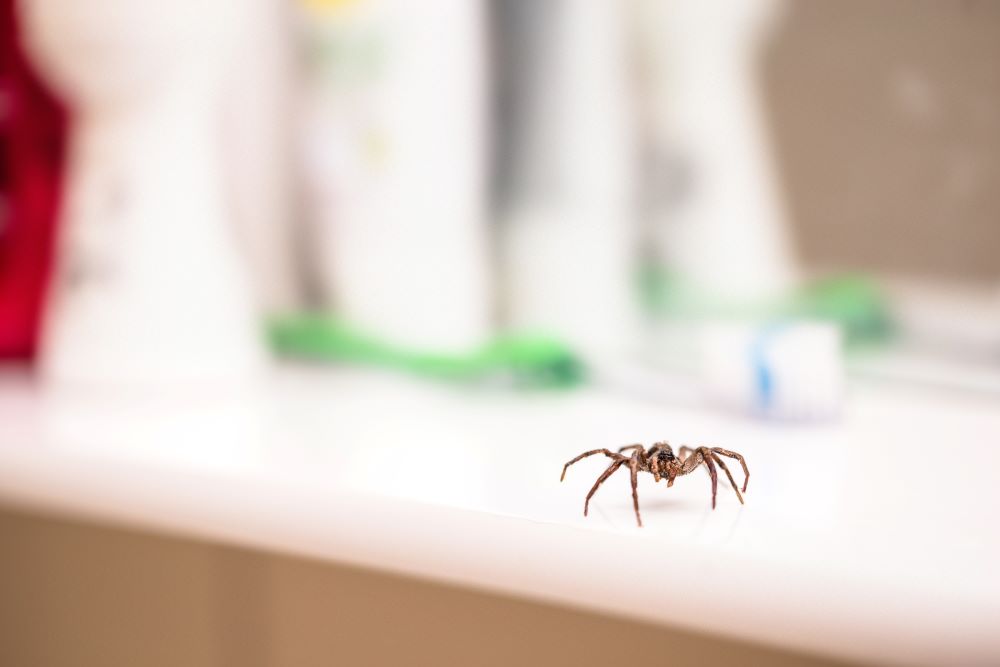Table of Contents
- Spider Species: The Many Faces of Arachnids
- The Lure of the Indoors: What Are Spiders Attracted to in your Home
- Myths & Misconceptions about Spiders
- The Spider-Home Interface: Making Your Home Less Inviting
- The Role of Other Pests
- The Trap of Second-hand Furniture
- The Call of the Wild: Mating Rituals
- The Draw of Domestic Waste
- Fruits: An Unusual Attractant
- Professional Spider Removal and Prevention
In the vast interconnected web of life, spiders play a crucial role as natural pest controllers. Yet, the sight of these eight-legged creatures scurrying across our living spaces often sends chills down our spine. Understanding what spiders are attracted to can help us manage their presence in our homes. So, let’s dive into the world of these fascinating creatures and discover what lures them into our living spaces.
Spider Species: The Many Faces of Arachnids
Before we delve into what spiders are attracted to, it’s worth noting that there are over 46,000 species of spiders, each with their unique characteristics and preferences. In the United States alone, you can find around 3000 different species. For instance, the agile and speedy Wolf spider is a common sight in Pennsylvania. This species prefers hunting its prey rather than spinning webs.
On the other hand, the Common House spider is another familiar sight in homes. While not necessarily harmful, they can leave behind itchy, raised bite marks if provoked.
The Lure of the Indoors: What Are Spiders Attracted to in your Home
Spiders, just like any other creature, are driven by the primal needs for food and shelter. Several factors make our homes an appealing habitat for these creatures. Let’s unravel these spider attractants.
Weather Conditions
Just as humans seek shelter during harsh weather, spiders too are known to migrate indoors when the weather conditions outside become uncomfortable. Whether it gets too warm, too cold, or too wet, spiders will seek refuge within the confines of your home to protect themselves from these elements.
The Pursuit of Food
Spiders are primarily carnivorous creatures. They feast upon a wide variety of insects. If there’s an abundance of insects in your home, it’s almost like rolling out the red carpet for spiders. Therefore, maintaining a clean house and eliminating other pests can significantly reduce the likelihood of a spider infestation.
The Comfort of Inside Conditions
Spiders have a preference for dark and secluded areas, making places like basements, crawl spaces, attics, and even garages, their ideal living quarters. By providing such a cozy habitat, we inadvertently make our homes more inviting to spiders.
Easy Access
Spiders are opportunistic creatures. If they find sheltered places like woodpiles or leaves near your home, they may use these as stepping stones to find their way inside. Also, any damaged areas, cracks, crevices, and open doors and windows can serve as easy access points for these creatures.
Access to Water
While some spider species can survive without water, certain others are attracted to damp environments. Areas in your house like basements, bathrooms, or spaces with standing water can turn into spider hotspots. Even excess moisture from overwatered plants or leaking pipes can attract spiders by providing hydration and luring other insects, which spiders feed on.
Myths & Misconceptions about Spiders
In our quest to understand what spiders are attracted to, it’s essential to debunk common myths and misconceptions that often cloud our understanding.
The Bright Lights Myth
Contrary to popular belief, bright lights do not attract spiders. Spiders don’t possess strong vision and are not drawn to light. However, the insects that spiders prey upon are often attracted to light, which explains this misconception.
Colors and Smells
There’s a common notion that certain colors or smells attract spiders. However, current research provides no substantial evidence to support this claim.
The Spider-Home Interface: Making Your Home Less Inviting
While spiders are more beneficial than problematic due to their role in controlling other insects, their presence can be visually displeasing and even frightening for some. Here are a few tips to make your home less inviting to spiders.
Prune the Greenery
Keep bushes, trees, and shrubs well-trimmed and away from your home. This reduces the sheltered spaces for spiders near your home, making it less accessible.
Regular Cleaning
Regular cleaning, especially in the corners of your home including ceilings, can help keep spiders at bay. Spiders prefer quiet and undisturbed areas, and regular cleaning disrupts their peace.
Patch the Holes
Ensure to patch up any holes in the foundations of your home. This reduces the number of potential entry points for spiders.
Seal the Gaps
Seal and caulk gaps around doors and windows. This again helps in reducing access points for spiders.
Install Screens
If you prefer keeping your doors and windows open, consider installing screens. This will allow fresh air to come in while keeping spiders and other pests out.
The Role of Other Pests
Spiders are primarily attracted to the insects in your home, which serve as their main food source. Thus, the presence of other pests in your home can indirectly attract spiders. By controlling the pest population in your home, you can indirectly reduce the spider population as well.
The Trap of Second-hand Furniture
While second-hand furniture doesn’t necessarily attract spiders, they can often serve as vehicles for spider infestations. Spiders, or their eggs, may hitch a ride into your home via second-hand furniture. Therefore, inspect any second-hand furniture carefully before bringing it into your home.
The Call of the Wild: Mating Rituals
Spiders can also attract their own kind during mating. They perform sound rituals which attract other spiders, potentially leading to more spiders being drawn into your home.
The Draw of Domestic Waste
Unattended domestic waste can draw a variety of pests, which in turn can attract spiders. Therefore, proper waste management is crucial in keeping spiders out of your home.
Fruits: An Unusual Attractant
Believe it or not, fruits can also attract spiders. It’s highly possible to spot a spider crawling out of a banana or grape. Always check your fruits carefully before bringing them into your home to avoid unknowingly inviting spiders.
Professional Spider Removal and Prevention
Despite the various DIY techniques to keep spiders out of your home, sometimes the situation might get out of hand. In such cases, professional help is recommended. Pest control services offer comprehensive solutions to keep your home spider-free. These services include multiple yearly visits, cost-effective treatments, both interior and exterior services, and service visits between scheduled visits if pest problems arise.
For professional assistance with spider infestations, consider contacting RECON Pest Services. We offer free quotes and can help you reclaim your living space from unwanted pests.





